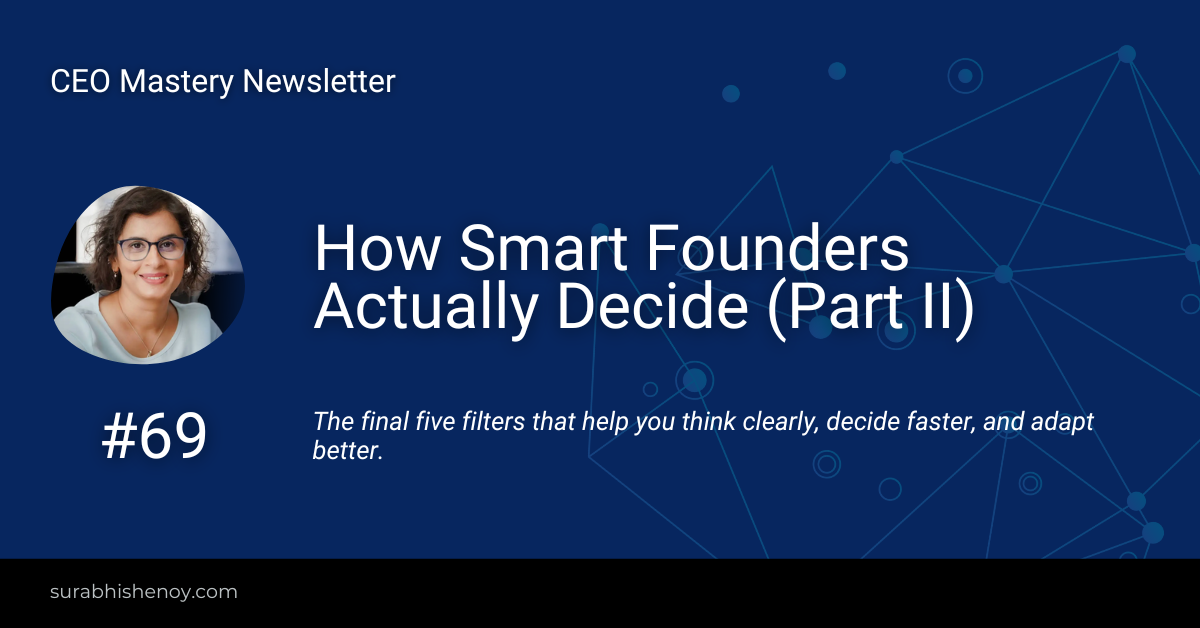How to Anticipate Stakeholder Concerns and Turn Every Proposal into a Winning Contract.
Picture this: You’ve just spent countless hours crafting what you think is the perfect proposal.
Your contact at the client’s company loves it.
You’re feeling confident.
Then, silence. Weeks pass.
Finally, the dreaded email arrives: “Thanks, but we’ve decided to go in a different direction.”
Sound familiar? You’re not alone.
The real culprit? Unseen stakeholders whose concerns never reached your radar.
But what if you could predict and address these concerns before they become objections?
This CEO Mastery edition gives you that superpower.
We’re diving into a game-changing tactic: The Stakeholder-Centric Proposal Approach.
This isn’t just a proposal writing tip. This is a strategy to dramatically increase your win rates and turn you into a strategic partner—not just another vendor.
So let’s break it down into actionable steps that you can implement in your very next proposal.
Phase 1: Strategic Preparation
Before you write a single word, lay the groundwork for a winning proposal:
1. Identify All Key Stakeholders
When you’re pitching for a large contract, you’re not just selling to one person—you’re navigating a complex web of decision-makers. In most organizations, significant investments require multiple approvals, often from people you’ve never met.
Think about it: A CRM implementation affects sales, marketing, IT, finance, and customer service. Each department has a stake, and each stakeholder has the power to champion—or derail—your proposal.
Your mission? Map out this decision-making ecosystem:
- C-suite executives (CEO, CTO, CFO)
- Department heads
- Procurement team
- End-users
Pro Tip: Use LinkedIn and company org charts to identify stakeholders you haven’t met.
2. Understand Each Stakeholder's Priorities
Once you identify the key players, let’s get inside their heads.
What keeps them up at night? What will make them look like heroes in their organization?
- Research each stakeholder’s role
- Anticipate their primary concerns and goals
- Consider both business and personal motivations
Example: A CFO might prioritize ROI, while a CTO focuses on integration with existing systems.
3. Create a Stakeholder Concern Matrix
Creating this document (not just thinking through it) helps to see how all stakeholders are interconnected. It also builds a habit of disciplined thinking.
- List stakeholders in columns
- List potential but specific concerns in rows
- Fill in how your solution addresses each concern
This visual tool ensures you cover all bases in your proposal.
I use a template (now part of my coaching program resources) to capture the right information. You get it for FREE as my CEO Mastery newsletter subscriber.
Grab it here > Stakeholder Concern Matrix
This is just a tool; the real value lies in the expertise and deep thinking behind it. A template can’t replace the guidance of an experienced coach.
Phase 2: Crafting the Stakeholder-Centric Proposal
With your preparation complete, it’s time to write a proposal that resonates with every decision-maker:
4. Tailor Your Executive Summary
- Craft mini-summaries addressing each key stakeholder’s priorities
- Use stakeholder-specific language and metrics
5. Develop Stakeholder-Specific Sections
- Create dedicated proposal sections for each major stakeholder group
- Focus on their unique KPIs and success metrics
6. Use Strategic Placement of Information
- Front-load each section with stakeholder-specific benefits
- Use sidebars or callout boxes to highlight key points for different roles
7. Anticipate and Address Objections
- List potential objections for each stakeholder
- Proactively address these in your proposal
- Use a “You might be wondering…” format to introduce these points
8. Incorporate Multi-level Value Propositions
- Articulate value at the organizational, departmental, and individual levels
- Show how your solution cascades benefits across the organization
9. Leverage Social Proof Strategically
- Include case studies and testimonials relevant to each stakeholder’s role
- Highlight outcomes that align with their specific concerns
10. Propose a Stakeholder-Inclusive Implementation Plan
- Outline how you’ll engage with various stakeholders during the project
- Show how their input will be valued and incorporated
Bringing It All Together: A Real-World Example
Let’s say you’re proposing a new CRM system to a mid-sized automobile spare parts manufacturing company.
Your primary contact is the Sales Director, but you’ve identified the CEO, CFO, CTO, and Customer Service Manager as key stakeholders.
In your proposal:
- The executive summary includes mini-sections addressing each stakeholder’s top priorities.
- For the CEO, you focus on how the CRM will drive overall business growth.
- The CFO gets a detailed ROI analysis and cost-saving projections.
- For the CTO, you dedicate a section to integration capabilities and data security measures.
- You address the Customer Service Manager’s concerns about user adoption and training.
- Throughout the proposal, you use callout boxes to highlight relevant case studies, like how a similar tech company increased customer retention by 25% using your CRM.
By proactively addressing each stakeholder’s concerns, you resonate at every level of the organization.
The result?
A much higher chance of hearing those magic words: “Proposal accepted!”
Remember, the goal is to make each stakeholder feel that this proposal was written specifically for them. By addressing their concerns proactively, you demonstrate a deep understanding of their needs and position yourself as a strategic partner rather than just another vendor.
Ready to transform your pitch? Start with the Stakeholder Concern Matrix today, and watch your win rates soar.
To your success in winning large contracts,
Surabhi
PS: If you found this useful, help a friend by sharing this newsletter.
Ready to master your CEO game?
Here are 2 ways I can help
1) Elite CEO Coaching:
Strategic support to scale systematically
→ Book Your Free Clarity Call
2) 1:1 Strategy Session
One focused hour. Clear action plan. Immediate implementation.
→ Get a Power Hour With Me




